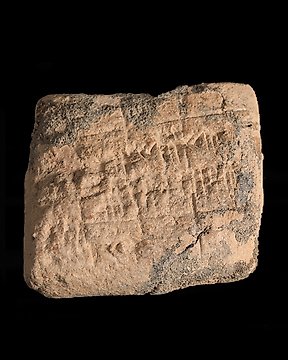
Antico babilonese Argilla Piccola tavoletta cuneiforme (Senza Prezzo di Riserva)
N. 83275823

N. 83275823

Bowl.
Chancay, Perú
800-1000 AD.
Gold
6.7 cm height. 10.22 Grams.
PROVENANCE:
Two birds - Annie Trotter, London, 13 September 1996.
Romy Rey Collection, London, 1970 - 1980.
CONDITION: Good condition.
DESCRIPTION:
The Chancay culture inhabited the central coast region of Peru, centering its activities in the Chancay and Chillón valleys but also occupying the Rimac Valley and the Lurín area. This is a desert region, but its fertile valleys form resource-rich river oases.
It is believed that the Chancay comprised a significant kingdom that included the domains of a number of local chieftains in the valleys and coastal regions of central Peru. Their basic form of organization was based on the ayllu, a small kinship-based clan controlled by a kuraka or ethnic leader, who would oversee the work of skilled workers, craftspeople, farmers, and herders, as well as playing an official role in festivals. Chancay society was highly stratified, as the difference in grave goods accompanying different individuals shows.
Artistically, the Chancay culture is best known for its ceramics, textiles, and woodwork. The most common ceramic vessels they made are oblong jars with narrow necks and wide mouths, with modeled human faces and geometric designs painted in black on a cream-white background. Other commonly found Chancay vessels are shaped like animals such as birds or llamas. They also made female figurines with short arms and eyes accentuated with a line on each side. The range of techniques, colors and themes used to make their textiles is quite remarkable. The Chancay used llama wool, cotton, and feathers, weaving a variety of goods that includes garments, bags, and funeral masks. The techniques they used include decorated open weave, brocade, embroidery, and painting, with the most common designs being marine motifs and geometric patterns. Woodworking produced everyday implements, statues, and decorative items, some of which they painted, while their metalwork – mainly using silver – produced clothing adornments, decorative ornaments, and masks. Unlike many other Andean groups, the Chancay used a simple style that reflected their everyday lives and certain aspects of religious life.
The Chancay built large cemeteries to house their dead, although they buried them in different ways. The tombs of leaders and people of rank were rectangular or quadrangular chambers with roofs of sticks and mud, 2 to 3 meters (up to 10 feet) deep, and accessed by a ladder. These tombs brimmed with offerings of ceramics, textiles, and artifacts made of precious metals. The graves of ordinary people were much shallower and contained a bundle with undecorated fabric and just a few grave goods.
Notes:
- The piece includes authenticity certificate.
- The piece includes Spanish Export License (Passport for European Union).
- According to Spanish legislation, items sent outside the European Union are subject to export taxes and will be added to the invoice, at the buyer's expense. These export fees are fixed on the final auction price and the tax rate is not applied directly on the total value of the item to be exported, but rather the different percentages by sections are applied to it:
- Up to 6,000 euros: 5%.
- From 6.001 to 60.000 euros: 10%.
This export permit application process can take between 1-2 months maximum.
- The seller guarantees that he acquired this piece according to all national and international laws related to the ownership of cultural property. Provenance statement seen by Catawiki.
#ExclusiveJurassicAntiquity
Come fare acquisti su Catawiki
1. Scopri oggetti speciali
2. Fai l’offerta più alta
3. Paga in tutta sicurezza